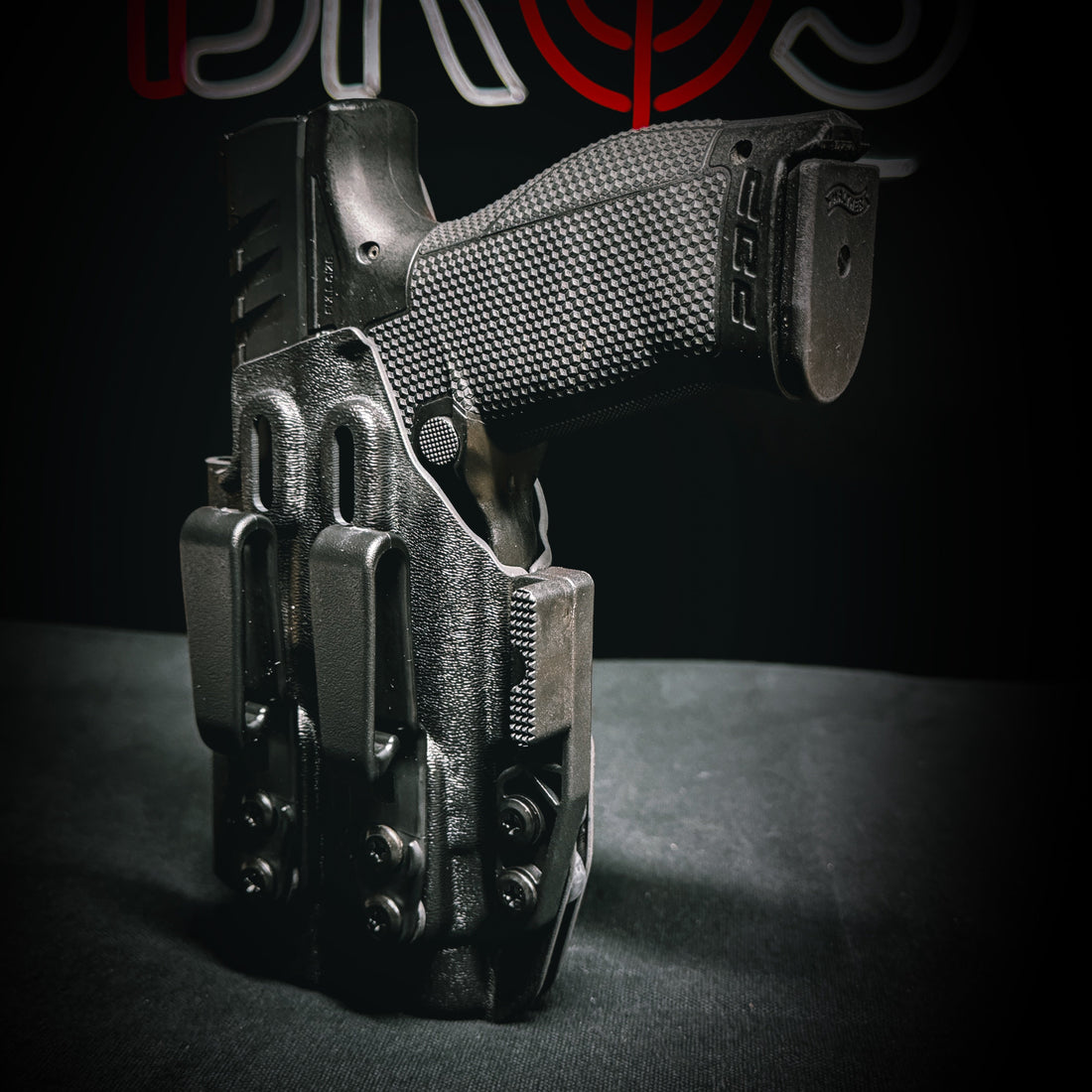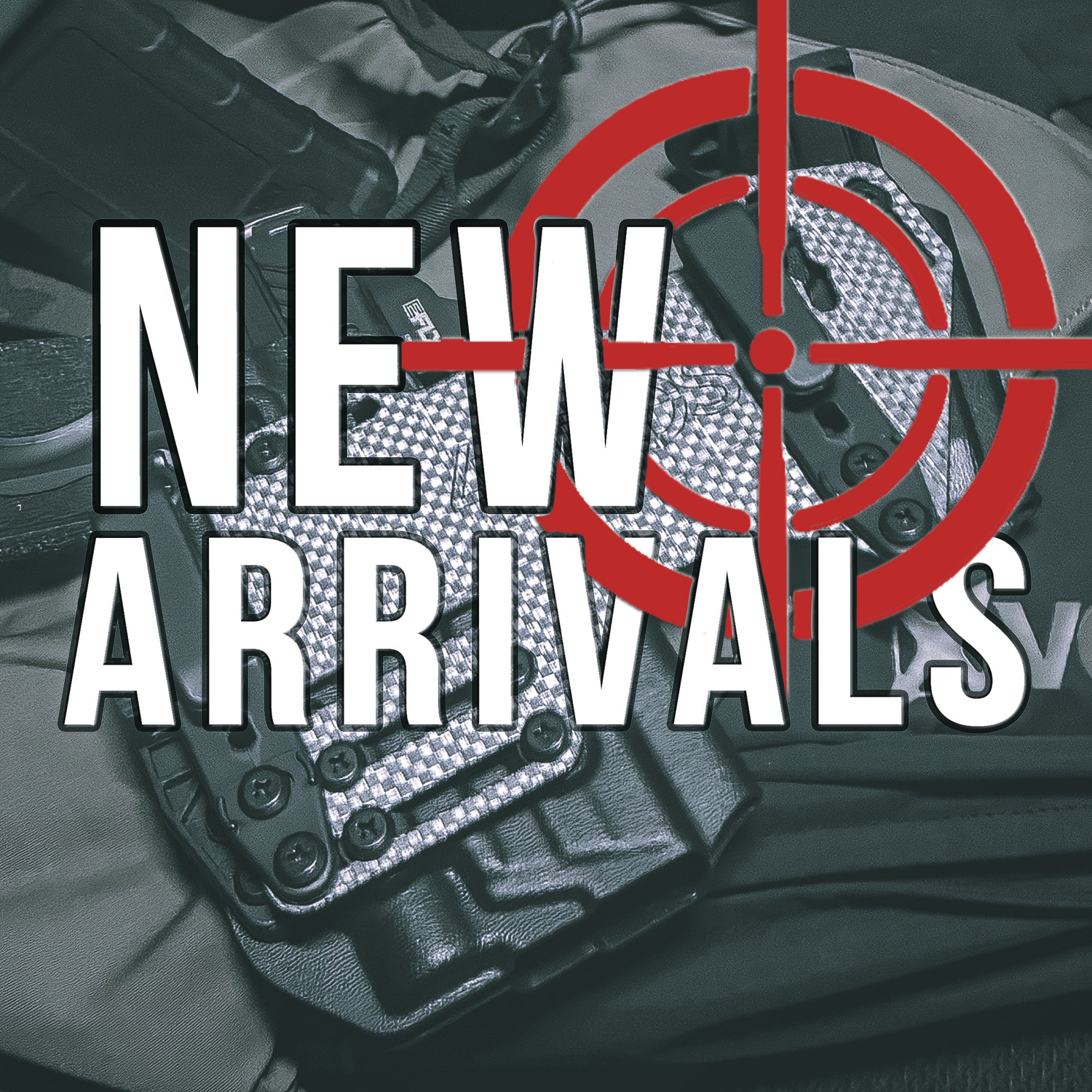
Optimal Positions for Wearing an IWB Holster
Jason PineShare
Carrying a concealed firearm isn't just about having the right weapon; it's about the seamless integration of pistol, holster, and carrier. When it comes to Inside-the-Waistband (IWB) holsters, crafted from materials like Kydex, nylon, or leather, the question of optimal positioning is paramount for both comfort and accessibility. This article will explore common IWB holster positions, demonstrate the correct method to wear your holster, and offer techniques to optimize comfort and concealment. Whether tucked in a bag or snug against the body, learn to tailor your carry to your lifestyle and your body, ensuring seamless protection without compromise. By addressing the challenge of finding the perfect fit, we help you make an informed decision for effective conceal carry.
Understanding Inside-the-Waistband (IWB) Holster Positions
Choosing the right position for an IWB (inside-the-waistband) holster is critical for concealed carry. It's essential to strike a balance between comfort and the ease of accessing your firearm. Aspects like waist placement and the fit around the belt play into this decision, along with the type of clothing one wears for concealment. Moreover, each shooting stance might inform the ideal holster location. Legal considerations also come into play, dictating where and how your weapon can be carried discreetly. The following sections delve into these aspects, offering practical advice to ensure safe and effective concealed carry.
The Importance of Holster Placement
The location of your IWB holster is pivotal for both the concealment and accessibility of your gun. Proper waistband positioning ensures that the outline of the firearm (commonly called printing) does not show beneath a shirt or jacket, preserving the element of discretion. Additionally, swift retrieval in critical situations hinges on the holster being situated where the hand naturally falls, minimizing interference from clothing such as buttons or pocket flaps.
Equally important is the comfort aspect of holster placement. Carrying a gun for extended periods can be cumbersome and possibly painful if the holster creates pressure points along the waistline or inhibits movement. Selecting an optimal position for the holster allows for a natural range of motion, ensuring that activities like sitting or bending do not cause the shirt to ride up or the gun to print visibly through clothing.
Balancing Comfort and Accessibility
For the concealed carry enthusiast, achieving a perfect equilibrium between comfort and gun accessibility is essential. Choosing a holster spot that allows the hand to swiftly align with the grip of the pistol without contorting the wrist ensures readiness and ease, whether seated or on the move.
Individual body shape and the day's attire invariably influence IWB holster placement. Someone with a leaner frame might find hip carry more comfortable and accessible, while another with a different physique may opt for a slightly forward position to prevent the gun from digging into the leg when sitting. It's these nuances of concealed carry that require one to consider personal ergonomics alongside the imperative of maintaining unimpeded access to the firearm for their safety and peace of mind.
Legal Considerations for Concealed Carry Positions
When considering the legalities of IWB holster positions, wearers must ensure they adhere to local laws that may dictate how and where their weapon is concealed. Certain jurisdictions might restrict carrying open carry or a concealed firearm in places such as backpacks or shoulder rigs, favoring waist-bound methods instead. It's imperative for individuals to familiarize themselves with these regulations to avoid legal pitfalls, while still maintaining quick access to their firearm under a jacket or other concealing garment.
Factors to Consider When Choosing Your Carry Position
Selecting the ideal position for your IWB holster is essential to ensuring a comfortable and effective concealed carry experience. A variety of factors influence this decision, impacting concealment, accessibility, and compliance with legal standards. Here’s what to consider:
- Body Type and Personal Comfort: Your body shape and comfort level determine where the holster feels best. This affects how well the firearm stays hidden and how fast you can draw it.
- Clothing Style and Dress Code: Your attire must work with the holster to keep the firearm concealed. The right clothing ensures the weapon’s presence isn’t obvious.
- Firearm Size and Holster Design: The size of your firearm and the holster’s design are vital for security and discretion. A good match keeps the weapon safe, unnoticed, and reliable.
By weighing these elements, you can achieve a practical and legally sound concealed carry setup tailored to your needs.
Body Type and Personal Comfort
Your body shape and comfort are the cornerstones in determining the ideal location for an IWB holster. It's the wearer's familiarity with their body contours and typical movements that will dictate the sweet spot for both all-day comfort and firearm concealability.
Personal comfort goes beyond the initial feel; it encompasses the long-term ease of carrying a concealed weapon throughout diverse daily activities. For instance, individuals who spend many hours seated may find that an IWB holster positioned directly on the hip can be intrusive, whereas shifting slightly to the front or back can alleviate pressure points and reduce discomfort. It's these subtle adjustments, informed by direct self-awareness and regular wear, that create a seamless carry experience, enhancing the confidence in one's concealed carry setup.
Clothing Style and Dress Code
The choice of attire significantly affects the concealment effectiveness of an IWB holster. Dressing with an IWB carry in mind requires selecting clothes that not only fit one's personal style but also provide ample cover for the firearm without it being detectable. For instance, a slightly looser shirt might help to better disguise the shape of a holster against the body, ensuring the weapon remains undetected.
Professional or formal environments often dictate dress codes that can challenge concealed carry practices. Wearing an IWB holster with business attire, for example, demands careful coordination to prevent the firearm from printing through thinner fabrics or disrupting the line of a suit jacket. Adapting the carry position to suit specific clothing choices can resolve such issues, with individuals tailoring their holster selection and placement to maintain a sharp, unencumbered appearance while ensuring their firearm is secure and accessible.
Firearm Size and Holster Design
The dimensions of the firearm and the design of the holster are quintessential in determining the most effective carry position. A compact handgun coupled with a slim-profile IWB holster can be more comfortably and discreetly carried in various positions around the waist, whereas a larger pistol may require careful placement to prevent obvious printing and to maintain ease of draw. The sturdiness of holster materials and the retention system directly affect both safety and the speed with which the weapon can be accessed.
Practical experience shows that holsters with adjustable cant and ride height offer greater versatility, adapting to different body shapes and preferred carry positions. Carriers must ascertain that the selected holster complements the size of the firearm while offering a secure fit that anchors the weapon consistently against the body. A fit that is too loose or rigid can compromise concealment and hinder quick access, making attention to holster design a critical component of responsible concealed carry practices.
If you have any questions or comments, please feel free to CONTACT US.




